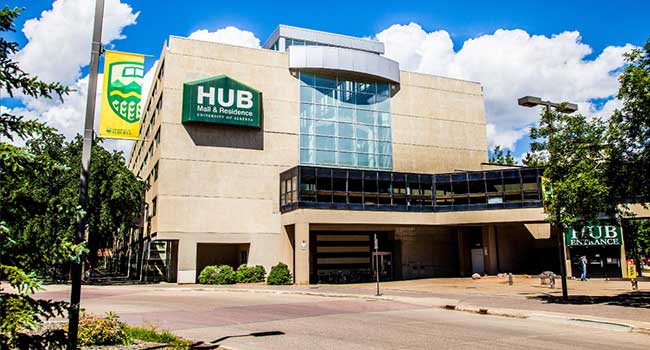
University of Alberta Students Call for Increased Security
According to Jared Larsen, president of the HUB Community Association, HUB residents do not feel safe.
- By Sydny Shepard
- December 10, 2018
University of Alberta students are calling for increased security at a campus building and residence that can be accessed by the public 24 hours a day, and which they say sees frequent trespassers and disproportionate crime rates.
U of A's HUB was built with connections in mind as it has a residence hall that houses 734 students but also connects to a mall and numerous facilities for faculty and students. The accessibility of the building is now what is causing the problems.
According to Jared Larsen, president of the HUB Community Association, HUB residents do not feel safe.
"From the outside, there are 72 access doors that are open 24/7 that go directly into student stairwells. And from the inside, there are 56, leading to 128 doors that are easily accessible to the general public at any point in the day," he said.
Larson said that the HUB sees a nigh number of suspicious persons, break-ins and - just this year - one sexual assault.
In October, a survey was conducted on security levels. Eighty-three percent of respondents were supportive of the building implementing a card-swipe program.
In 2013, the university added security cameras and a CCTV system, as well as automatic locking doors and rotating security presence.
"For the time it was built, it was an award-winning facility. It created a hub for this end of the campus," Robert Pawliuk, director of operations and facilities said. "Things change. Circumstances change and we are seeing some of those nuances that were wonderful back then, are creating issues for us today, so we have to look at how we resolved those issues."
Although no timeline is set, the students were told to expect an update on the school's security efforts by mid-January.
About the Author
Sydny Shepard is the Executive Editor of Campus Security & Life Safety.